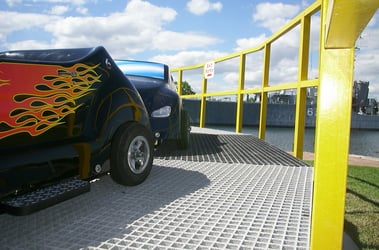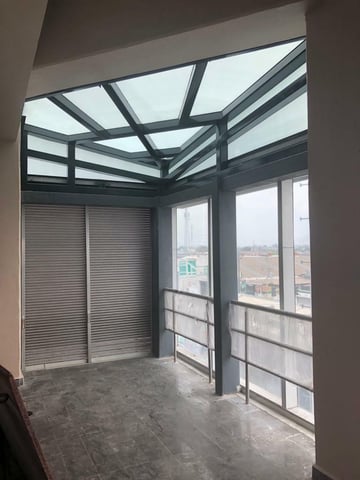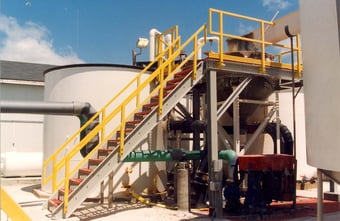The construction landscape is constantly evolving, demanding materials that not only withstand the...
Structural Fibreglass for Long-Term Performance in Built Environments
The construction landscape is constantly evolving, demanding materials that not only withstand the test of time but also offer high versatility and adaptability. Enter structural fibreglass, also known as Glass Reinforced Plastic (GRP), a material that has claimed significance in commercial and industrial environments over the past several decades. Its unique blend of strength, resilience, and ease of use makes it the go-to choice for architects, engineers, and builders seeking innovative solutions for a wide range of applications.
Understanding Structural Fibreglass
Structural fibreglass, at its core, is a composite material. Glass fibres, valued for their tensile strength, are embedded within a resin matrix, often polyester or vinyl ester. This blend of materials fosters exceptional characteristics that set structural fibreglass apart. The pultrusion process, in which pre-impregnated fibers are pulled through a heated die, shapes the material into various structural fibreglass shapes, including beams, channels, angles, and custom profiles.
Key Properties of Structural Fibreglass (GRP)
The magic of structural fibreglass lies in its impressive property portfolio:
Strength-to-weight ratio: Featherweight yet boasting remarkable strength, structural fibreglass outperforms steel in its weight-to-strength ratio, making it ideal for lightweight structures requiring high load-bearing capabilities.
Corrosion resistance: Unlike its metal counterparts, structural fibreglass shrugs off the corrosive effects of harsh chemicals and saltwater environments, minimising maintenance and extending its lifespan.
Durability: In the face of scorching sun or biting frost, structural fibreglass remains unfazed. Its resistance to extreme temperatures ensures unwavering performance. Some resins are also formulated to offer higher protection against degradation from UV.
Flexibility: Design freedom takes center stage with structural fibreglass. Its inherent moldability allows for the creation of complex shapes and intricate designs, pushing the boundaries of architectural expression.
Cost-effectiveness: While the initial investment might seem higher, the long-term savings tell a different story. Reduced maintenance needs, extended lifespan, and ease of installation make structural fibreglass a cost-effective choice in the long run.
Read more: A Guide to Glass Reinforced Plastic (GRP) for Structural Grating
Applications of Structural Fibreglass in Commercial and Industrial Environments
Forget rusting metal and rotting wood – structural fibreglass is quietly revolutionising diverse spaces. Imagine sturdy walkways snaking through chemical plants, resistant to spills and corrosion, or bridges spanning rivers with their sleek forms. This versatile champion excels in harsh environments, offering unmatched durability and low maintenance.
From safety first to maximising space, fibreglass shines in countless applications. Picture technicians scaling silos with lightweight ladders, confident in the unwavering support, or modular mezzanines seamlessly adding floors to factories, boosting efficiency and growth. Whether it's protecting valuable resources with tank covers or providing safe access to remote areas with portable platforms, fibreglass delivers strength, versatility, and ease of use, pushing the boundaries of design and functionality across industries.
Case Studies
Here are a few examples of what you can do with structural fibreglass, from projects done by Fibergrate:
GRP Grating at Cyclone Speedway Recreation: Revitalisation of a legendary racetrack using durable, lightweight GRP decking, ensuring years of high-octane thrills.

Fibergrate's Structural Fibreglass at Cyclone Speedway |
GRP Products at Cargill Salt Processing Plant: Using GRP handrails and platforms to evade the corrosive effects of salt production, keeping workers safe and operations running smoothly.
|
|
GRP Window Structure Monterrey Metro Station: GRP pultruded shapes were chosen in window structures at a metro station in Monterrey, Mexico because they are electrically non-conductive, lightweight, corrosion resistant, UV resistant, and can be custom designed.

Fibergrate's GRP pultruded shapes in Monterrey Metro station |
Conclusion
As innovative minds continue to explore the potential of FRP, we can expect even more groundbreaking applications to emerge. From bridges spanning vast distances to futuristic architectural marvels, the possibilities seem endless. So, the next time you embark on a construction project, don't hesitate to consider the strength, versatility, and long-term value that structural fiberglass brings to the table. It might just be the champion material you've been searching for. For additional guidance, contact Fibergrate today.



